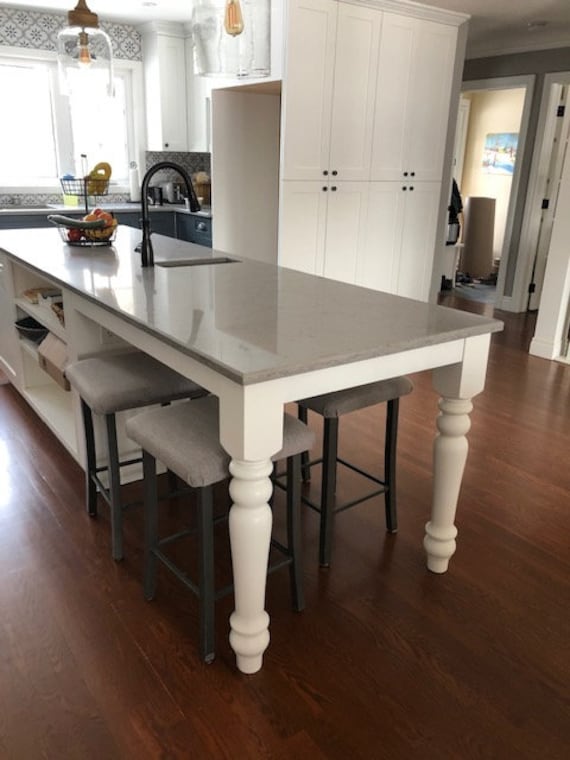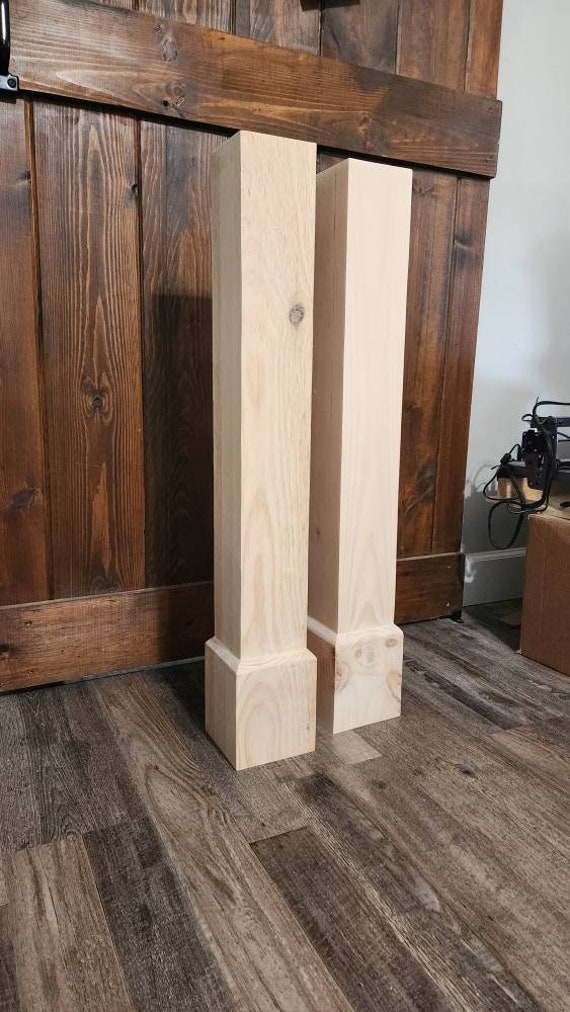Picking the Perfect Kitchen Island Leg for Toughness and Functionality
Picking the Perfect Kitchen Island Leg for Toughness and Functionality
Blog Article
The Relevance of a Sturdy Kitchen Island Leg in Producing a Practical Cooking Location
A strong kitchen area island leg acts as a fundamental part in developing a functional cooking atmosphere, supplying necessary support for both the kitchen counter and numerous kitchen tasks. The security it supplies can dramatically minimize the threat of crashes in high-traffic locations, while additionally contributing to the total aesthetic coherence of the space. As kitchens advance into multifunctional areas for cooking, eating, and mingling, the selection of products and design factors to consider for island legs comes to be progressively essential. Understanding these elements can change your kitchen area right into a more secure and more reliable location, prompting more exploration into the very best alternatives available.
Benefits of Sturdy Island Legs
Supplying essential support, strong kitchen island legs play a critical function in improving the performance and durability of kitchen islands - kitchen island leg. These legs not only birth the weight of the kitchen counter and any type of added items put on the island, but additionally contribute to the total security of the framework. A well-supported cooking area island ensures that it stays practical and upright, even under hefty use, which is particularly essential in active cooking area settings
Additionally, tough island legs can enhance the aesthetic charm of the kitchen. They provide a strong framework that can enhance various design styles, from modern-day to typical. This convenience permits house owners to customize their cooking area islands according to personal preference while ensuring that the structural integrity continues to be uncompromised.
In enhancement to their supportive role, durable cooking area island legs can additionally enhance safety. Inevitably, spending in strong cooking area island legs is necessary for a useful and aesthetically pleasing cooking location.
Products for Kitchen Island Legs
When selecting products for cooking area island legs, toughness and visual allure are vital elements to consider,. One of the most common materials include wood, steel, and engineered wood, each offering one-of-a-kind advantages.
Hardwood, such as oak, maple, or cherry, is a traditional selection because of its stamina and ageless charm (kitchen island leg). It can withstand considerable weight and is immune to wear, making it optimal for high-use cooking area atmospheres. In addition, wood can be discolored or painted to enhance numerous kitchen designs
Steel legs, commonly crafted from stainless-steel or functioned iron, provide a contemporary and industrial appearance. They are exceptionally strong and can support substantial loads while being immune to dampness and warmth, which is advantageous in a cooking area. Steel legs can also be easily cleansed, enhancing their functionality.

Layout Considerations for Stability
The option of products for kitchen area island legs directly affects the design factors to consider for stability. When designing a cooking area island, it is paramount to examine the weight-bearing capacity of the chosen materials. Much heavier products, such as strong timber or steel, generally give higher security, especially under the stress and anxiety of day-to-day use.
Additionally, the leg design have to incorporate correct geometry to enhance security. A wider base raises the assistance location, decreasing the threat of tottering or tipping. Consideration should likewise be offered to the height of the legs; out of proportion leg sizes can cause inequality, endangering the overall security of the island.
Additionally, the circulation of weight across the island is critical. Making sure that the leg placement lines up with the heaviest components, such as counter tops and home appliances, will certainly even more improve security.
Upkeep Tips for Durability

Cleaning is another essential element of maintenance. Relying on the product of the legs-- Discover More whether wood, metal, or composite-- appropriate cleaning techniques ought to be employed. For wooden legs, a gentle clean with a suitable timber and a wet fabric cleaner will certainly assist protect their surface. Steel legs may need a light gloss to stop corrosion and maintain their luster.
Furthermore, tightening screws and bolts consistently can make sure security and stop tottering. Consider strengthening the legs with additional brackets or supports to improve longevity if the cooking area island experiences heavy usage. Applying a safety surface or sealer can safeguard versus moisture and discolorations, extending the life expectancy of the legs. By complying with these maintenance suggestions, homeowners can guarantee their kitchen area island legs continue to be useful and durable for years to come.
Selecting the Right Leg Style
Routine maintenance ensures that kitchen island legs remain functional and sturdy, yet picking the appropriate leg style is just as vital for both visual appeals and support. The selection of leg design can considerably affect the total style and harmony of your kitchen area.

Capability is one more critical facet. Thicker legs or those with a sturdy base can support much heavier counter tops and tools, enhancing the island's energy. Conversely, slender legs might develop a ventilated look, suitable for lighter layouts but potentially less helpful.
Conclusion
In recap, the importance of tough cooking area island legs can not be overstated in the development of a useful cooking location. These legs supply important support, improve security, and add to the general visual of the cooking area. By meticulously selecting ideal products and styles, along with executing correct upkeep practices, the longevity and efficiency of cooking area islands can be made certain. Ultimately, purchasing robust island legs is fundamental to accomplishing a reliable and secure cooking atmosphere.
A tough kitchen island leg serves as an essential component in developing a practical food preparation setting, providing required support for both the counter top and numerous kitchen area activities.Providing essential assistance, tough kitchen island legs play a critical duty in improving the capability and resilience of cooking area islands. Inevitably, spending in sturdy cooking area island legs is important for a practical and aesthetically pleasing cooking area.
Factor to consider must additionally be provided to the elevation of the legs; disproportionate leg sizes can lead to imbalance, compromising the total stability of the island.
Wooden legs give warmth and a classic appearance, while metal legs use a industrial and modern-day feeling.
Report this page